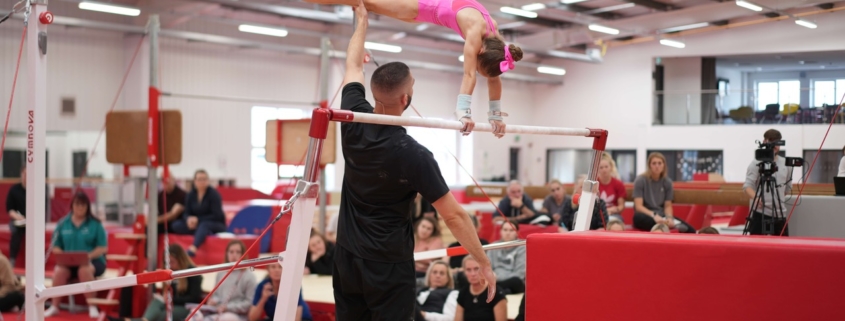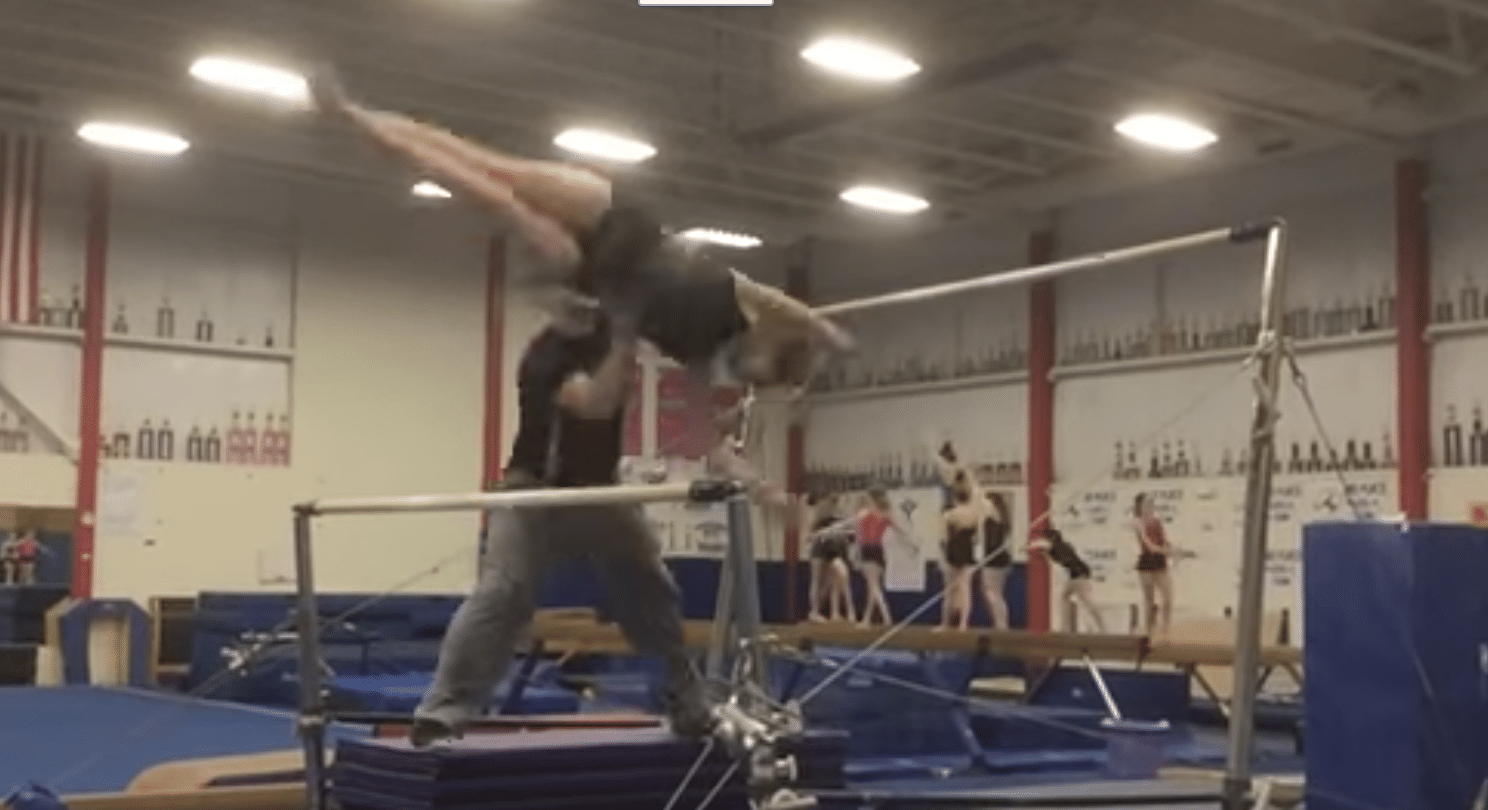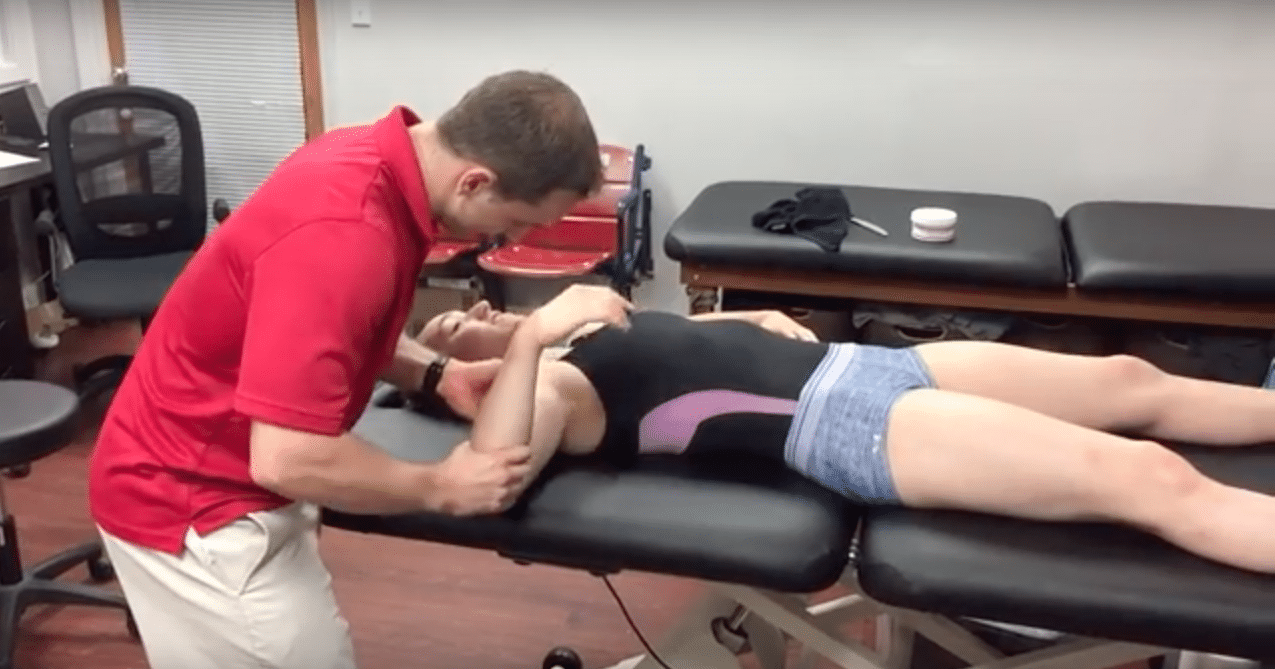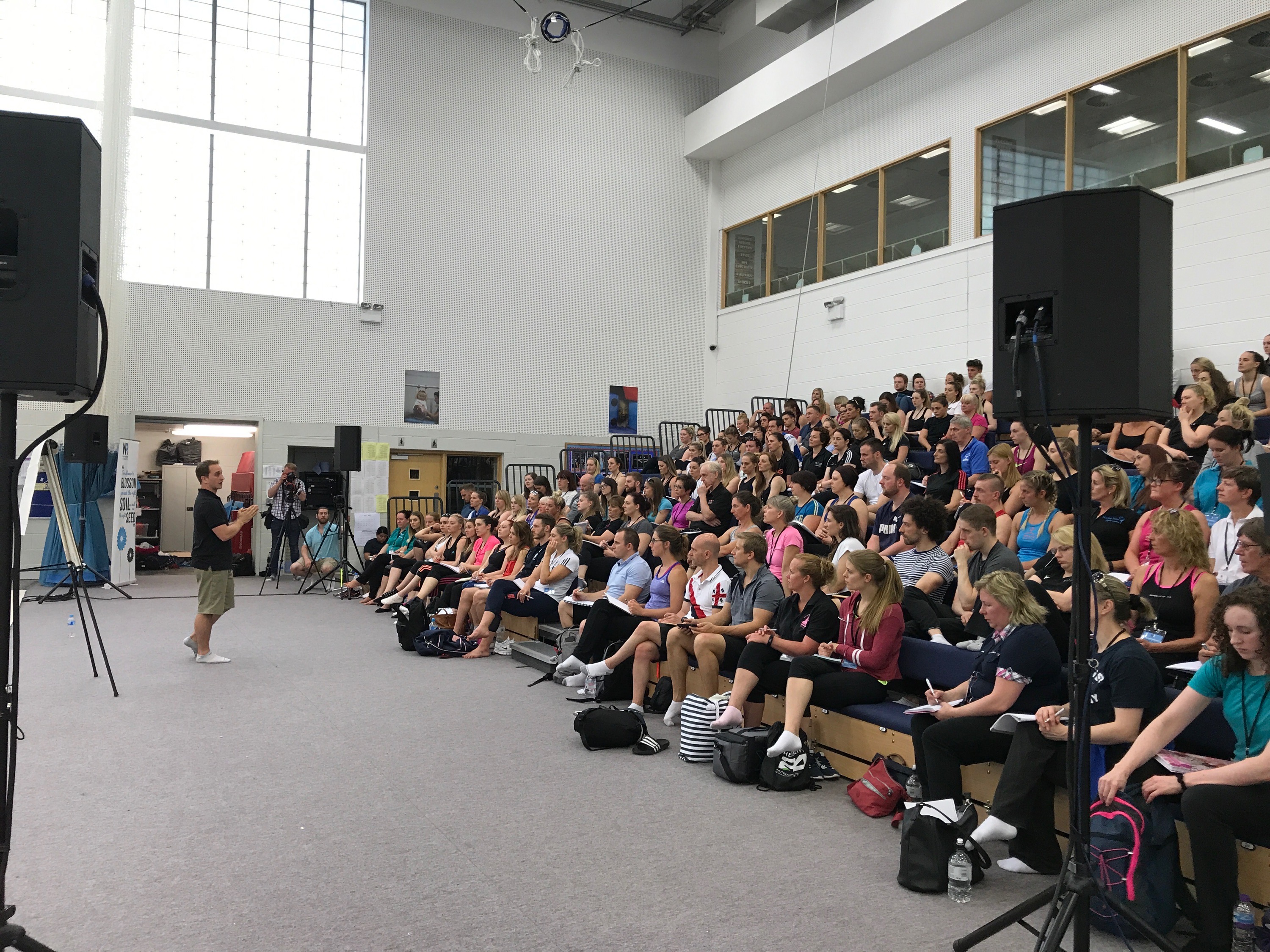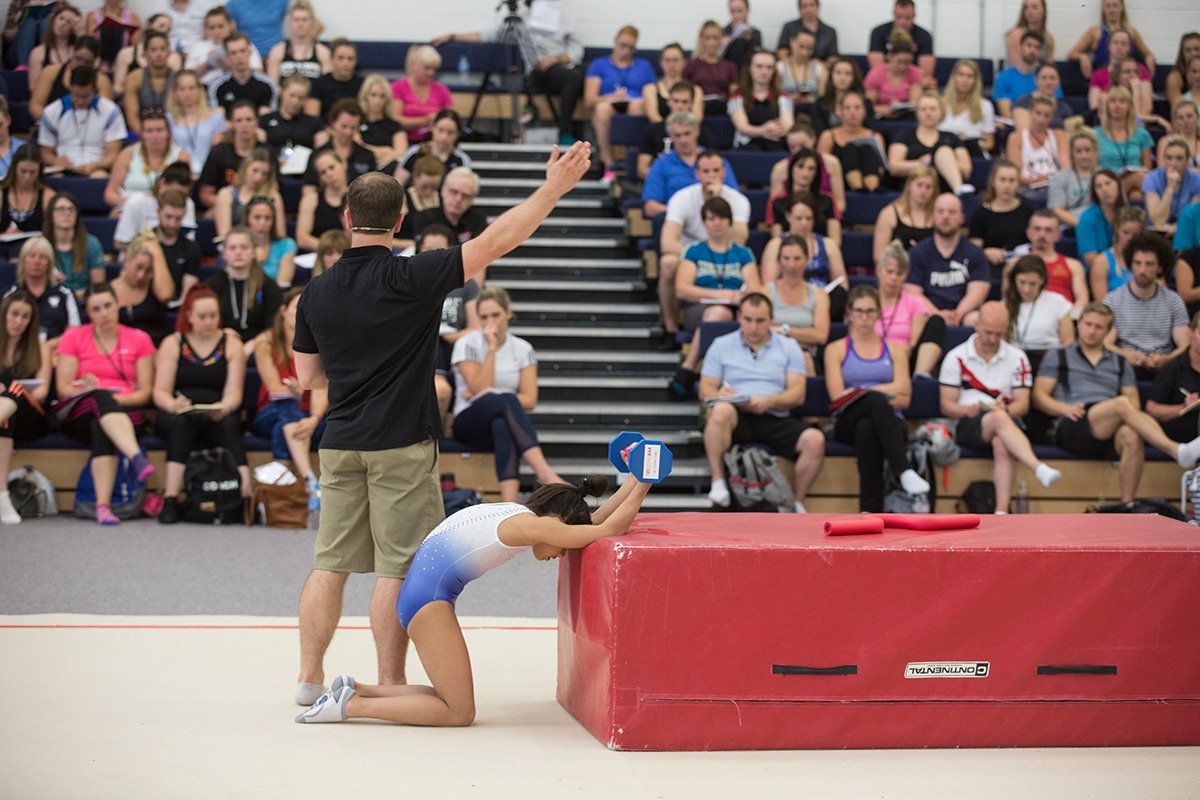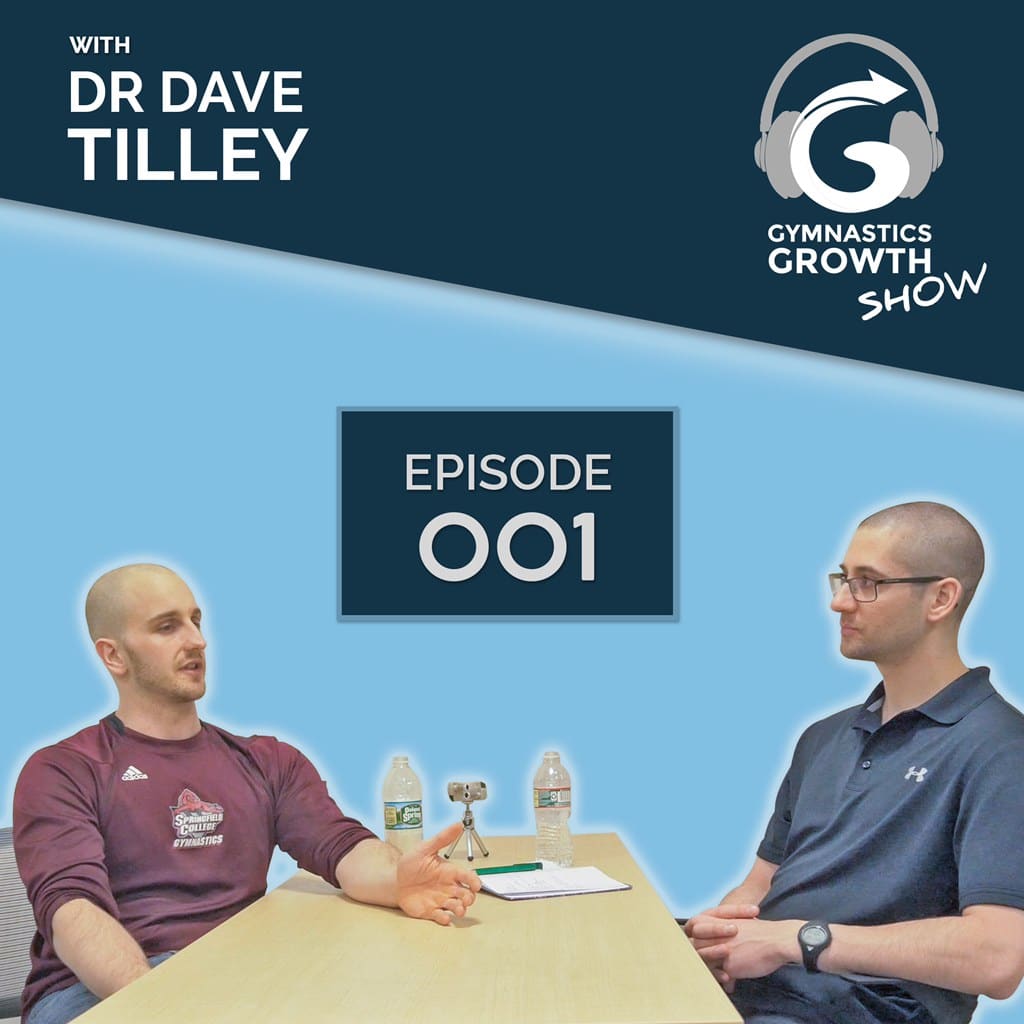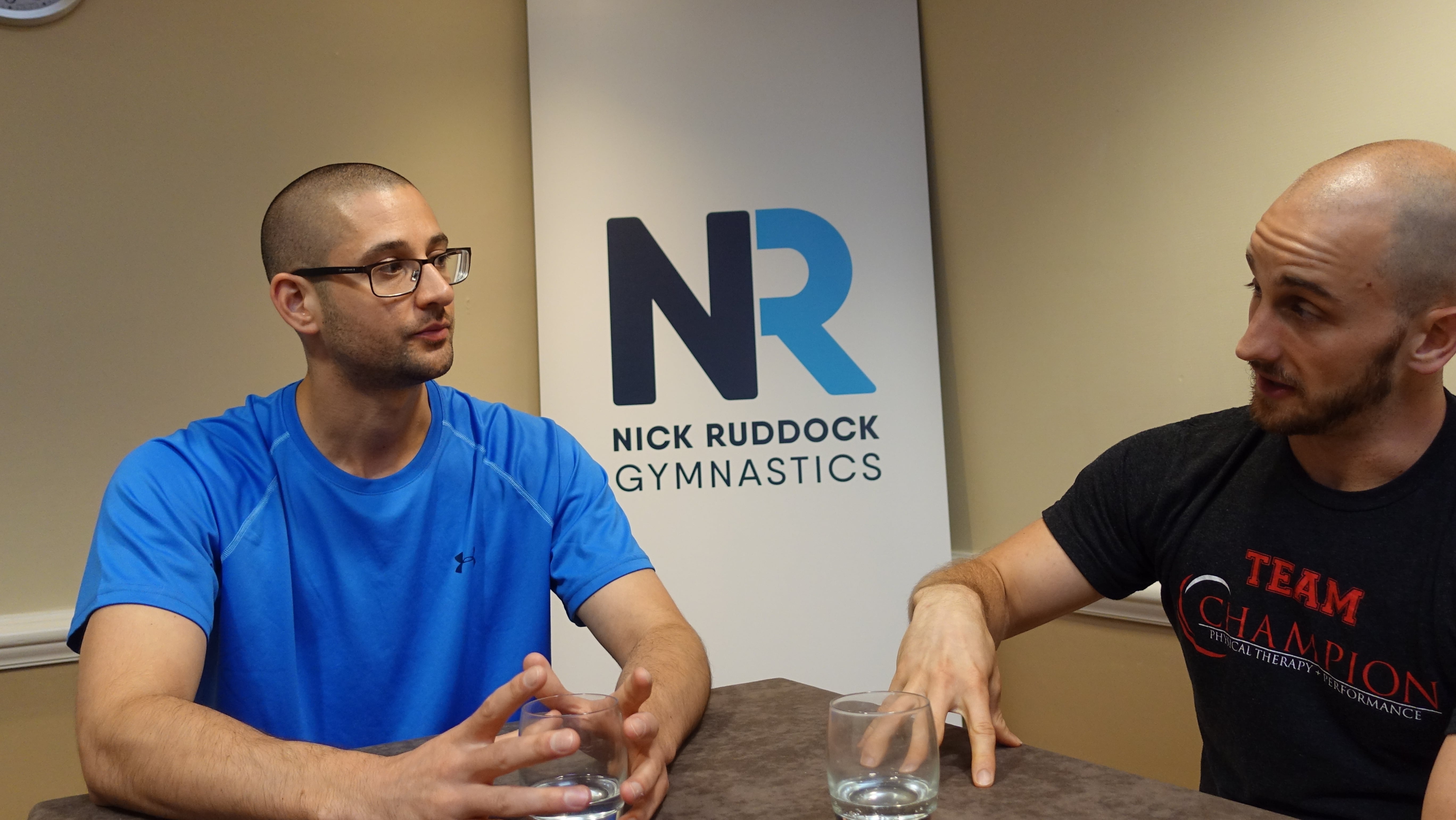Master the Basics: Gymnastics Drills for Kips, Fly Aways, and Giants
During this week’s podcast with Nick Ruddock, he goes deep on must-hear advice to improve uneven bar skills. Nick discusses his 5 principles for creating great bar workers, specifically shape, extension, swing, flight, and vision.
Knowing that many people struggle with kips, giants, and dismounts, I wanted to write a quick block post on this area of the podcast to help reiterate Nick’s best advice for gymnastics coaches to read and see drills for. I will walk through examples for these below, highlighting Nick’s key principles as they are noted so that people can see how they serve as foundations for many bar skills.
Before we dig in if you are a gymnastics coach wanting to get the exact drills, skills, and bar techniques Nick uses on bars be sure to check out the live 2023 SHIFT Symposium, SHIFTs flagship 3-day virtual gymnastics education event
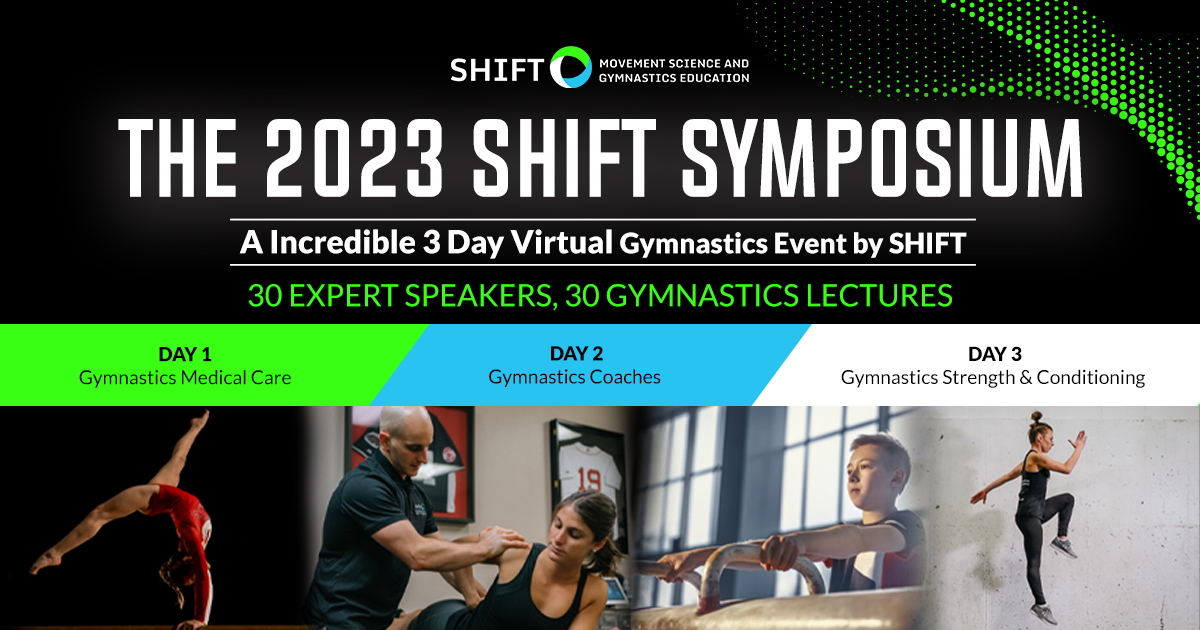
We have an epic 30-speaker lineup with 3 full days, and on Day 2 you will get 9 hours of live lectures on uneven bar, beam, vault, floor, pommel horse, mental blocks, culture, motivation, and MUCH more. Check it all out HERE,
https://shiftmovementscience.com/2023shiftsymposium/
Table of Contents
Helping Improve Gymnasts’ Kips with Shaping, Vison, and Extension.
Kips can be the bane of coaches’ & gymnasts’ training if these principles aren’t thought about and trained. One of the most important things to focus on is shaping. Specifically, the compression shape after the elongation phase as gymnasts snap-in.
Now with that said, a gymnast’s lack of compression shape may be more related to compression flexibility limitations (like stiff hamstrings) or true strength and control issues (like not having strong core and hip flexor muscles). If a gymnast can’t fully touch their toes in a standing or seated position or doesn’t have a good leg raise passively on their back, you might want to focus on hamstring and compression flexibility. For that, I love this pike flexibility complex.
Finally, coaches should also focus on the full extension of the glide to set up and build power into the compression of a kip. By keeping the body long, ears covered, and full stretching during the glide, we can help gymnasts maximize how much swing is transferred into the compression motion.
As you can see, despite the kip being considered a more basic skill, without shaping, vision, and extension Nick discusses gymnasts may really struggle.
Helping Gymnasts With Fear During Giants Using Extension, Vision, and Tapping
Another area many gymnasts struggle with on bars is giants. Often times when these basic principles that Nick outlines are overlooked, gymnasts start to get very scared of peeling off or missing their giants. Or, they just lack the power and amplitude to make giants over consistently. By taking a step back to think about the same principles, we can really find helpful drills and cues to use.
One of the most important things to focus on when teaching the giant element is the extension of the body. To do high-quality giants safely and consistently, gymnasts need to be able to fully extend their bodies with their ears completely covered during the casting and drop phase. This helps to create proper upper body and head alignment, as well as set up a fully extended fall shape.
This extension cue of ‘push tall” helps to create a less fearful drop from casting, as it can create lots of body tension, but it also helps set up the first phase of the tap. Then, this continued focus on a ‘long’ extended swing helps maximize power under the bar and set up the arch snap action late for a full weightless rise of the giant. While many coaches focus on the end result of the kick, it’s actually the extension through the drop and pre-kick phase that makes a huge difference. A great simple drill for this is doing hollow uppers, lowers, and together with a stick while curing this long extended position.
Finally, gymnasts need to really understand smooth shape-changing and tapping motions. The amount of body tension a gymnast can achieve in their tap, and the timing/power in their tap, greatly helps to improve the amount of energy put into their giants. From here, gymnasts can learn the finesse of slow giants, fast giants, stalled giants, or controlled giants for dismount setup.
Reducing Flyaway Fear with Extension, Vision, and Tapping
Flyaways are notoriously one of the most challenging skills for coaches and gymnasts, as oftentimes a lack of these principles causes gymnasts to pull in and develop fear or a mental block. Or, in the best case, they are safely dismounting but lack amplitude and height to progress past a tuck or layout.
One of the most important coaches must focus on is the extension of the body and keeping the ears fully covered during flyaways. This may seem minute, but it can make a huge difference in the overall quality of our dismount elements, particularly when it comes to reducing the chance of pulling in. Keeping the ears covered, and extending long through the swing, promotes the shoulders staying open at all times. This then allows the gymnast to travel more up and away from the bar, versus when the shoulders close and the body rotates back inward.
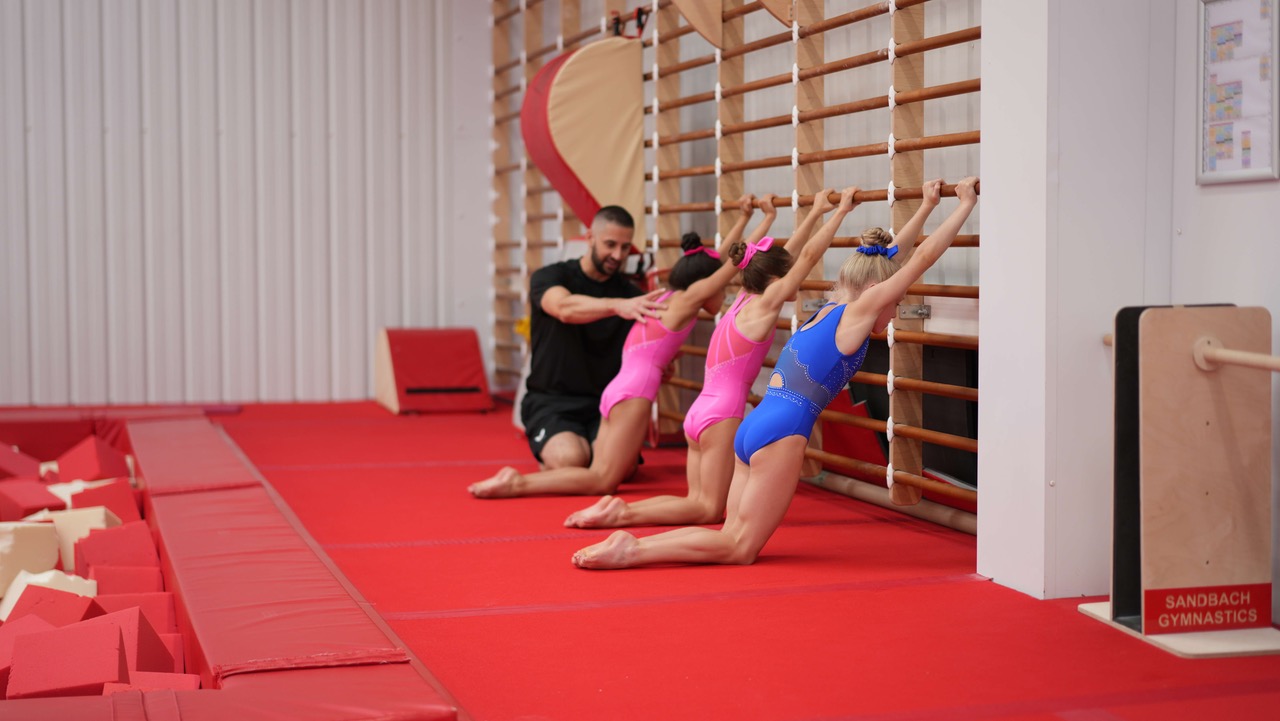
This extended, ears-covered position is complemented by the concept of vision Nick describes. By deliberately looking at their toes, athletes are able to keep their heads in, which again reduces the risk of pulling in. As noted above, the eye line generally drives the head position. When the eyes are on the toes during drills or dismounts, the head tends to stay in. When the eyes are not on the toes, the head is likely slightly or fully out.
Lastly, for truly powerful and safe dismounts, it is also crucial that powerful tapping at the correct time occurs. This starts with the basic elements of tap swings when younger, and is built upon during giant progressions. By tapping at the proper time, with a lot of power, and through an extended position, gymnasts are able to travel away from the bar and have the height to safely rotate fully. Swing-to-shoulder stands are by far one of the best ways to work this safely, and in higher repetition counts.
Concluding Thoughts
So, while the kip, giant, and flyaway all appear like very different skills, they actually have a lot of Nick’s base principles in common. By taking a step back to realize this, and then applying simple but effective drills to very high quality, we can help improve many areas of bars and other events.
Again, if you are a gymnastics coach wanting to get the exact drills, skills, and bar techniques Nick on bars (and 10 other expert gymnastics coaches use on other events) be sure to check out the live 2023 SHIFT Symposium, SHIFTs flagship 3-day virtual gymnastics education event.

Hope this helps and have a great week!
– Dave

